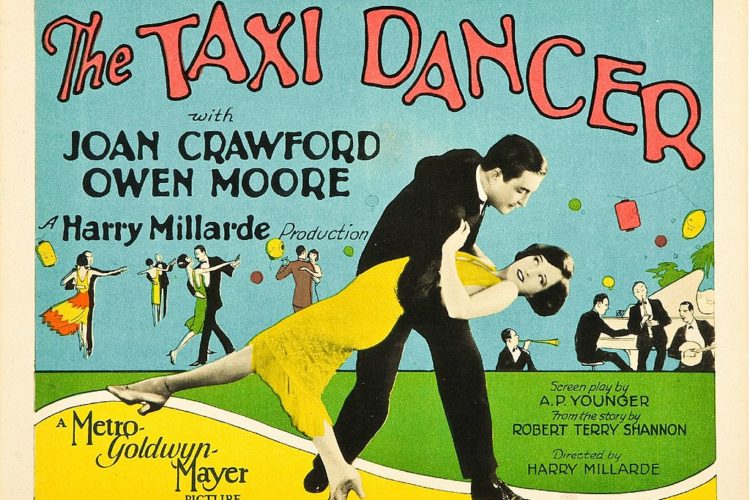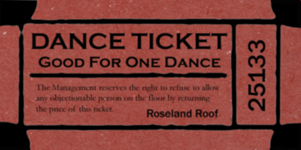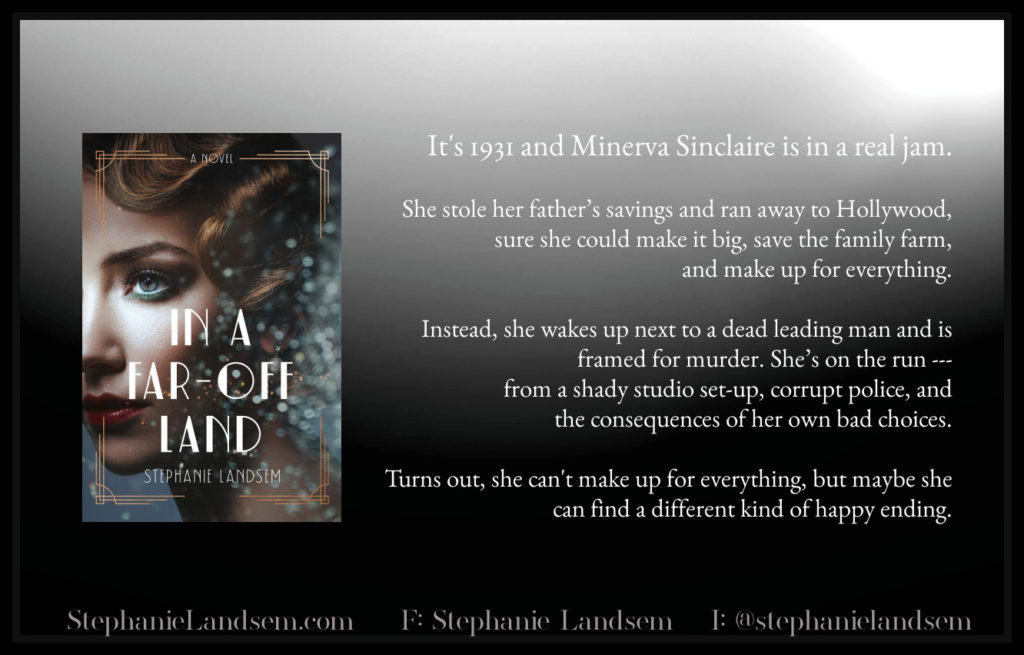The Hebgen Lake Earthquake of 1959 struck on a moonlit August night in western Montana,…

Were Taxi Dancers a real thing in 1930s Hollywood?
If you’ve read In A Far-Off Land, you know that Mina Sinclaire gets herself into dire straights when she runs away from home to make it big in Hollywood. The Great Depression is tightening its hold on the City of Angels and she desperately needs a job. When she meets Lana at an audition, Mina thinks she may have found one:
Over watery coffee and a stale sandwich, Lana told me about a place that was hiring. “It’s not terrific, but you can make five dollars on a good night. And your days are free to answer the cattle call.” She jerked her head toward the studio. “I’ll take it,” I told her, and when I thanked her for the sandwich and the tip, she said not to mention it. “Girls like us, we gotta stick together.”
Mina finds herself at a dance hall where her job is called taxi-dancing. The idea behind taxi dancing was simple, a lonely man paid a pretty woman for a dance. Dance halls like The Rose in In A Far-Off Land were common all over the U.S. in the thirties and forties. Hollywood even got in on the act and made a movie about one starring Joan Crawford. And there was popular song written about them in 1930s.
Ten cents a dance
that’s what they pay me,
gosh, how they weigh me down!
Ten cents a dance
pansies and rough guys
tough guys who tear my gown!
Seven to midnight I hear drums.
Loudly the saxophone blows.
Trumpets are tearing my eardrums.
Customers crush my toes.
Sometime I think
I’ve found my hero,
but it’s a queer romance.
All that you need is a ticket
Come on, big boy, ten cents a dance.
(Ten Cents A Dance. Music written by Richard Rodgers, with lyrics by Lorenz Hart for the Ziegfield Revue)

The real dance hall behind the fictional Rose in In A Far-Off Land was called the Roseland Roof on Spring Street in Los Angeles. In the late 1920s, LA had a large population of single men, and plenty of them were willing to part with a dime for some female companionship. The Roseland Roof was open from 7:30 pm to 1:00 am seven days a week. Patrons bought tickets like this one for ten cents — giving them a ninety-second dance with the lady of their choice. To make five dollars, a taxi-dancer like Mina had to dance a hundred songs every night.
According to one of the owners, the business was a legitimate service. “It was a fairly nice group of people…A lot of business people. There were some lonesome people. Some of them wanted to be away from their wives….the girls had to be good conversationalists. People didn’t care that much about dancing. They mostly wanted someone to talk to.” (Ben Fenton, owner of the Roseland Roof)
Dance halls were legal and legitimate, but sometimes the goings-on weren’t always as wholesome as the owners claimed. Bootlegged liquor, drugs, ‘other activities’ were often taking place behind the scenes. As the Depression deepened in the early 1930s, dance halls–like everything else–fell onto hard times and so did the dancers. In Mina’s story, taxi-dancing didn’t make ends meet.
But what I couldn’t figure was how Lana had money to spare for glad rags and bootlegged gin when I worked the same job and couldn’t scrape together enough for rent at the end of the month.
In the end, Mina found out exactly how Lana was moonlighting, and it wasn’t legal. But you’ll have to read In A Far-Off Land to discover how The Rose and taxi-dancing led to the rest of Mina’s story.

Announcement: don’t forget to subscribe to my newsletter RIGHT HERE to be entered into a monthly drawing for a free book! It might be one of mine or one I’ve recommended. You don’t have to do anything but subscribe and check your inbox once a month to see if you’ve won!
Had you heard of taxi-dancing or places like the Roseland Roof in your area of the world? Let me know in the comments below.
This Post Has 2 Comments
Comments are closed.

In a Far Off Land was a great read. I felt as though I knew Mina personally, my mom used to talk about that era, mom was a “flapper”
and talked about winning a Charleston contest. Stephanie certainly did her research, highly recommend her book
Thank you so much, Jean! That’s so cool that your mom was a flapper. Do you have any pictures of her?